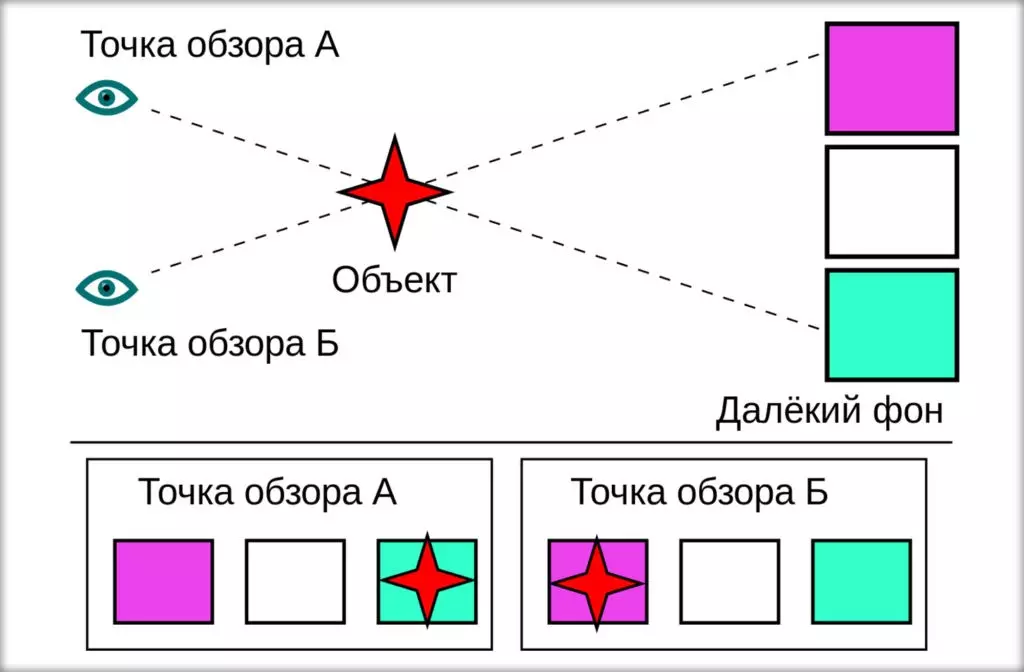
In everyday life, the distance measurement from one point to the other does not cause difficulties. This uses different units familiar to us. Hearing, for example, a figure of 100 m, each can mentally imagine how much it is. To find out the distance between objects in astronomy, scientists involve a whole complex of methods.
Heavenly bodies within the solar system
Astronomers rarely operate with kilometers. To say that the distance from the ground to the moon is 384.4 thousand km, it is still possible, but with other objects the numbers become much longer. To measure the distance within the solar system, a special astronomical unit is used - Au (a. E. E.).
It corresponds to the size of the large semi-axes of the Earth orbit and at the same time distance between the Earth and the Sun. In 2012, the Astronomical Union decided to determine the exact number for A.E. - 149 597 870 700 meters. The convenience of using the unit is that when measuring distances to objects, you can compare them with the remoteness of the planet from the Sun. For example, the distance from the ground to uranium is about 20 a. e.

To find out the distance to relatively closely located objects (several a. E.), The method of radar is used. It has high accuracy. It is necessary to know several parameters: the speed of light, the movement of the body and land. The radio telescope sends a signal that is reflected from the body surface and returns to the ground. The time of passing the beam there and back allows you to calculate the distance to the object.
If the celestial body is more remote from the ground, then the distance to it is measured by the method of horizontal parallax. Pararallaks is a change in the visible location of the body relative to the remote background, depending on where the observer is located. Several parallaxes are isolated, which have been used in astronomy.
The horizontal parallax method is as follows. Being at one point point, the position of the object in the sky is relatively longer than distant stars. Then move to another point of the planet and again note the position of the celestial body.
The distance between the observation points is known as the angles between the surface and the object. As a result, a conditional equally chaired triangle is obtained. As a base, the diameter of the earth orbit is used.
Measurement of distances to distant objects
For even more remote objects, even the use of astronomical units is impractical. Therefore, astronomers express distance in light years (1 light year is 9.46 x 1015 m), and more often - in parrseca (1 parseca is 3,2616 light years).

If you need to find out the exact distance to the stars, and it is assumed that it does not exceed several dozen light years, use the method of a one-year parallax. The location of the bodies within the solar system is measured relative to distant stars. And the definition of the distance to these stars occurs with comparison of them with other galaxies.
The measurement method of the distance remains the same - it is necessary to move from one point of the earth's surface to another to find out the angular movement of the star. However, the size of the land is too small relative to the stars.
For convenience and more accurate measurements, the observer remains in the same point, but the measurements are made at the interval of half a year. For 6 months, land, turning around the Sun, will switch to the opposite point of the orbit, and the researcher will receive the maximum distance between the two points. The smaller will be parallax, the more parsekops to the star.
It is possible to measure the distance to the bodies outside the Milky Way is only approximately. Scientists are focused on the brightness of star-cefeide, outbreaks of supernovae and compare them with other already known objects. And the distance to distant galaxies, where the stars are not visible, is determined by observing the displacement of the lines in their spectra.

An interesting fact: the polar star is a typical cefeide, which is known to change - can change the brightness. However, recently, the polar star is distinguished by a stable glow. The distance to it from the ground - 137 parses.
Measurement of distances to stars and galaxies has a specific sequence. For closely located objects, methods of radar and parallax are used. For distant - evaluate the glow and change in the spectrum of tel.
Channel site: https://kipmu.ru/. Subscribe, put heart, leave comments!
